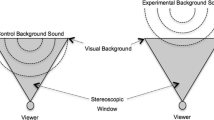Abstract
Due to rapid technological progress in high dynamic range (HDR) video capture and display, perceived contrast by users of HDR technology is becoming increasingly important in the visual signal processing chain. More specifically, when considering a higher contrast and brightness range in cinema, it is essential to understand the limits of visual perception under specific viewing conditions and brightness levels. A field experiment was conducted to test the effect of light scattering and reflections from the cinema theater on users’ perceivable dynamic range. We investigated how the perceivable dynamic range evolves with various background levels and different strengths and shapes of local highlights. Results showed a significant effect of image composition and the average picture level on the perceivable near black dynamic range. In addition to the limitations of the human visual system, one needs to consider the limitations of a theatrical projection setup where bright elements in the image via reflections on the walls, ceiling, floor, seats, and audience contaminate the black elements of the image.









Similar content being viewed by others
References
Alvarez E (2016) Netflix is going all in on HDR and more original content. http://www.engadget.com/2016/02/23/netflix-hdr-original-content-mwc-2016/. Accessed 23 Feb 2016
Rempel AG, Heidrich W, Li H, Mantiuk R (2009) Video viewing preferences for HDR displays under varying ambient illumination 1:45–52
Ledda P, Santos LP, Chalmers A (2004) A local model of eye adaptation for high dynamic range. In: proc. 3rd int. conf. comput. graph. virtual reality, vis. interact. Africa. Association for computing machinery (ACM), pp 151–160
Stiles WS (1939) The directional sensitivity of the retina and the spectral sensitivities of the rods and cones. Proc R Soc Lond Ser B Biol Sci 127:64–105
Watson AB, Yellott JI (2012) A unified formula for light-adapted pupil size. J Vis 12:12
Daly S, Kunkel T, Sun X, Farrell S, Crum P (2013) Preference limits of the visual dynamic range for ultra high quality and aesthetic conveyance. In: SID symp. dig. tech. pap. p 8651
Kunkel T, Reinhard E (2009) A reassessment of the simultaneous dynamic range of the human visual system. 17–24
Tydtgat C, Maes D, Stojmenovik G, Grillet A (2015) Modelling of achievable contrast and its impact on HDR projection in commercial cinema environments. In: SMPTE 2015 annu. tech. conf. exhib. abstr. pp 1–14
Schuck M, Lude P (2015) An analysis of system contrast in digital cinema auditoriums. In: SMPTE 2015 annu tech conf exhib 1–19. https://doi.org/10.5594/M001667
Houston J, Beck W (2014) Design considerations for cinema exhibition using RGB laser illumination. In: SMPTE 2014 annu tech conf exhib 1–30. https://doi.org/10.5594/M001586
Farrell BS, Kunkel T, Daly S (2015) A cinema luminance range by the people, for the people : viewer preferences on luminance limits for a large-screen environment. SMPTE Motion Imaging J 2:56–61. https://doi.org/10.5594/j18577
Mantiuk R, Myszkowski K, Seidel H, Informatik MPI (2004) Visible difference predicator for high dynamic range images. In: 2004 IEEE int. conf. syst. Man Cybern. The Hague, Netherlands, pp 2763–2769
Yeganeh H, Wang Z (2013) Objective quality assessment of tone-mapped images. IEEE Trans Image Process 22:657–667
Gilchrist A, Kossyfidis C, Bonato F, Agostini T, Cataliotti J, Li X, Spehar B, Annan V, Economou E (1999) An anchoring theory of lightness perception. Psychol Rev 106:795–834. https://doi.org/10.1037/0033-295X.106.4.795
Kremkow J, Jin J, Komban SJ, Wang Y, Lashgari R, Li X, Jansen M, Zaidi Q, Alonso J-M (2014) Neuronal nonlinearity explains greater visual spatial resolution for darks than lights. Proc Natl Acad Sci 111:3170–3175. https://doi.org/10.1073/pnas.1310442111
Van Nes FL, Koenderink JJ, Nas H, Bouman MA (1967) Spatiotemporal modulation transfer in the human eye. J Opt Soc Am 57:1082–1088. https://doi.org/10.1364/JOSA.57.001082
Recommendation I, BT.500-13 I-RR (2012) Methodology for the subjective assessment of the quality of television pictures BT Series Broadcasting service. Int Telecommun Union 13:1–48. http://www.itu.int/rec/R-REC-BT.500/en
Wang D, Wang T, Gong Y (2014) Stereoscopic visual fatigue assessment and modeling. pp 901110–901122
Choi M, Sharma D, Zafar F, Cheng WC, Albani L, Badano A (2012) Does veiling glare in the human eye hinder detection in high-dynamic-range displays? IEEE/OSA J Disp Technol 8:273–282. https://doi.org/10.1109/JDT.2011.2179636
Murdoch MJ, Heynderickx IEJ (2012) Veiling glare and perceived black in high dynamic range displays. J Opt Soc Am A 29:559. https://doi.org/10.1364/JOSAA.29.000559
Holladay LL (1926) The fundamentals of glare and visibility. J Opt Soc Am 12:271–319. https://doi.org/10.1364/JOSA.12.000271
Moon P, Spencer DE (1945) The visual effect of non-uniform surrounds. JOSA 35:233–248
Acknowledgements
HD2R is a project co-funded by imec, a digital research institute founded by the Flemish Government. Project partners are Barco, Grass Valley, Limecraft, VRT, and Grid. We would like to thank Kinepolis Belgium for letting us use their infrastructure.
Author information
Authors and Affiliations
Corresponding author
Ethics declarations
Conflict of interest
On behalf of all authors, the corresponding author states that there is no conflict of interest.
Informed consent
Informed consent was obtained from each participant.
Rights and permissions
About this article
Cite this article
Vyvey, T., Castellar, E.N., Maes, D. et al. An experimental study on the impact of cinema theater reflections on users’ perceived intra-frame dynamic range. Qual User Exp 3, 3 (2018). https://doi.org/10.1007/s41233-017-0014-5
Received:
Published:
DOI: https://doi.org/10.1007/s41233-017-0014-5




